HOLI :- THE IMPORTANCE OF COLOR IN HINDUISM
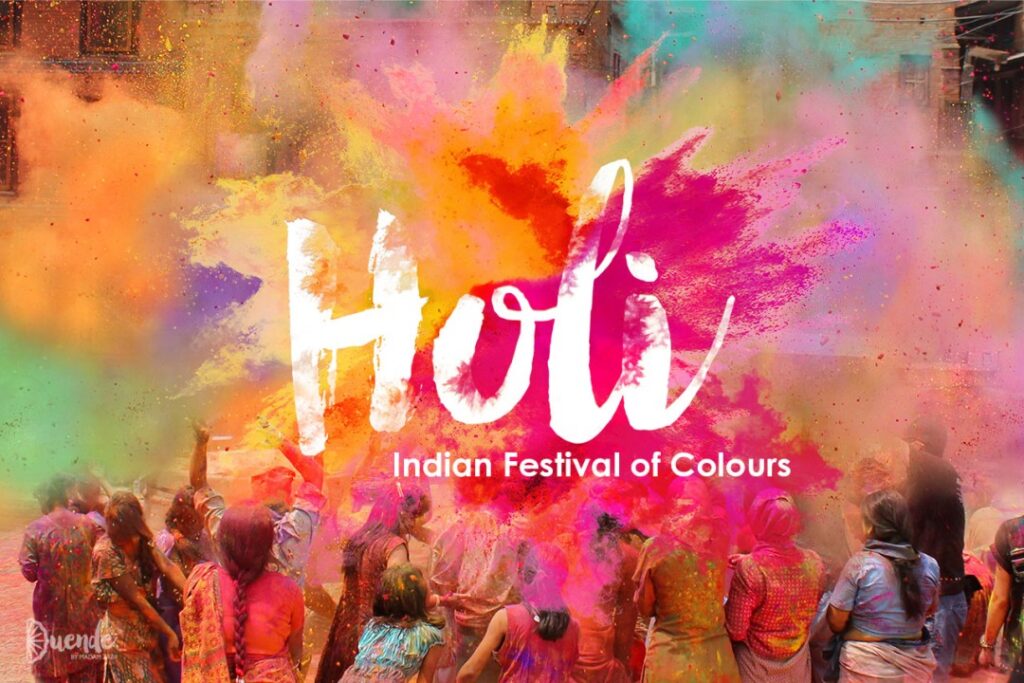
The traditions of Holi vary across the country and are deeply rooted in Indian mythology. In many regions, the festival is linked to the legend of Hiranyakashipu, an ancient demon king. Hiranyakashipu sought to kill his son, Prahlada, a devout worshiper of Vishnu, with the help of his sister, Holika. Holika sat with Prahlada on a pyre wearing a protective cloak, intending to burn him, but she ended up burning instead while Prahlada remained unharmed. Later that night, Vishnu slew Hiranyakashipu, marking a victory of good over evil. In several parts of India, a large pyre is lit on the night before Holi to commemorate this event.
In other regions, the tale of Krishna and Radha takes center stage. According to this narrative, Krishna, a Hindu deity believed to be an incarnation of Vishnu, fell in love with Radha, a milkmaid. However, Krishna was self-conscious about his dark blue skin compared to Radha’s fair complexion. To remedy this, he playfully colored Radha’s face during a game with her and other milkmaids, which is believed to be the origin of throwing colored water and powder during Holi. The joyful celebrations also reflect the mischievous nature of Krishna, known for his pranks and playful demeanor.
The Importance of Color in Hinduism
In Hinduism, colors hold profound importance beyond mere decorative purposes, deeply intertwined with religion and culture. Colors play a crucial role in shaping our perception of and influence on the world around us. Each color seems to emit distinct signals that ultimately impact our physical and mental well-being.
Red: – Red holds positive connotations in Hinduism. Red indicates both sensuality and purity. Hence, it is prominently featured in weddings, with brides often donning red attire and adorning their foreheads with red bindis, symbolizing purity. The goddess Durga, depicted wearing red, embodies honorable qualities, bold emotions, and distinctive characteristics.
Saffron: – Saffron holds paramount significance for Hindus, being the most sacred color. Symbolizing fire, it represents purity as impurities are burned away by fire. Additionally, it signifies religious abstinence. This color carries profound sacredness for Hindus, being associated with holy men and ascetics who have renounced worldly pursuits. Wearing saffron symbolizes the pursuit of enlightenment. It also serves as the battle colors of the Rajputs, the warrior caste.
Green: – Green is a festive color, often associated with life and happiness, particularly in Maharashtra. Symbolizing peace and happiness, green has a calming effect on the mind, being cool to the eyes and representing nature.
Yellow: – Yellow embodies the essence of knowledge and learning, symbolizing happiness, peace, meditation, competence, and mental development. Associated with the vibrancy of spring, it stimulates the mind and activates mental faculties. Lord Vishnu is often depicted wearing yellow attire, representing his embodiment of knowledge. In some traditions, unmarried individuals wear yellow to attract a partner and ward off evil spirits.
White: – White, being a blend of seven different colors, symbolizes a fusion of their qualities. It embodies purity, cleanliness, peace, and knowledge. Saraswati, the goddess of knowledge, is typically depicted wearing a white dress while seated on a white lotus. White is associated with the Brahmin caste and Hindu religious leaders often cover themselves with white ashes to signify spiritual rebirth. Additionally, white is a color of mourning in Hindu culture.
Blue: – The Creator has bestowed an abundance of blue in nature, evident in the sky, oceans, rivers, and lakes. Deities embodying qualities such as bravery, manliness, determination, the ability to confront adversity with a stable mind, and depth of character are often depicted as blue. Lords Rama and Krishna, who dedicated their lives to protecting humanity and vanquishing evil, are portrayed in blue hues.
HOLI CELEBRATIONS AROUND THE WORLD
Holi is a Hindu festival celebrating the victory of good over evil, in particular the destruction of a demoness called Holika. The festival lasts one night and one day and is often held in March. In 2024, Holi will take place on 25 March. Holi is celebrated wherever the Indian diaspora is present. Here are a few countries where Holi has been celebrated.
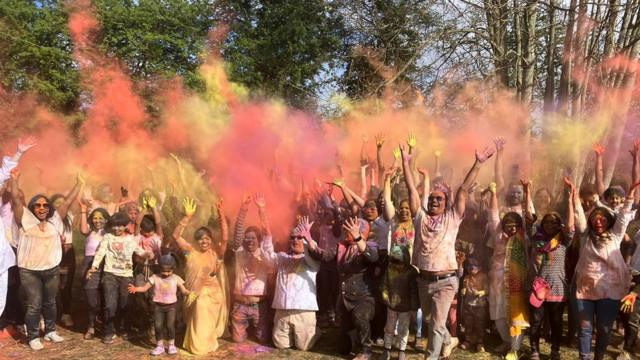
Holi in Exeter, UK , Courtesy : BBC

Leicester Maher Community Association, UK , Courtesy : BBC
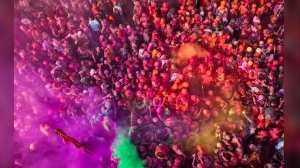
Villagers from Barsana and Nandgaon smeared with colors play Lathmar Holi at Nandagram temple in Nandgoan village, 115 kilometers (70 miles) south of New Delhi, India, Tuesday, March 19, 2024. (AP Photo/Rajesh Kumar Singh)

Japan’s Ambassador To India Celebrates Holi With Wife, Smears ‘Gulaal’ On Her
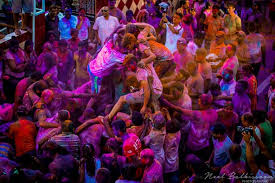
Holi 2024: The atmosphere at Camp Thorel, Mauritius
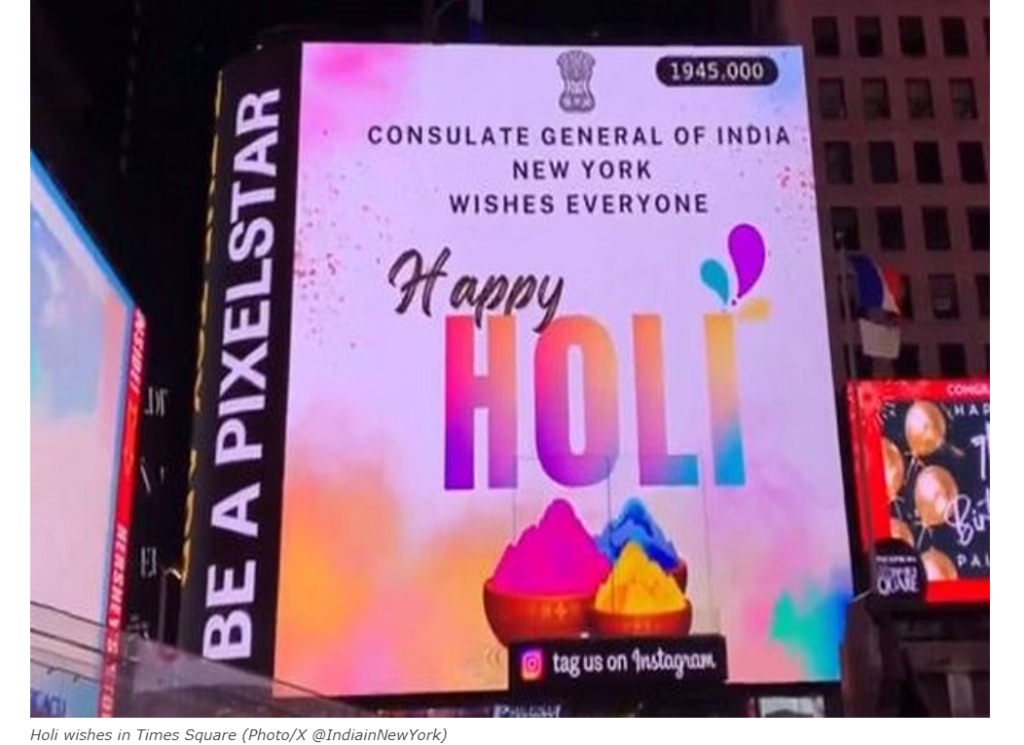
Times Square illuminates with wishes for Holi festival
